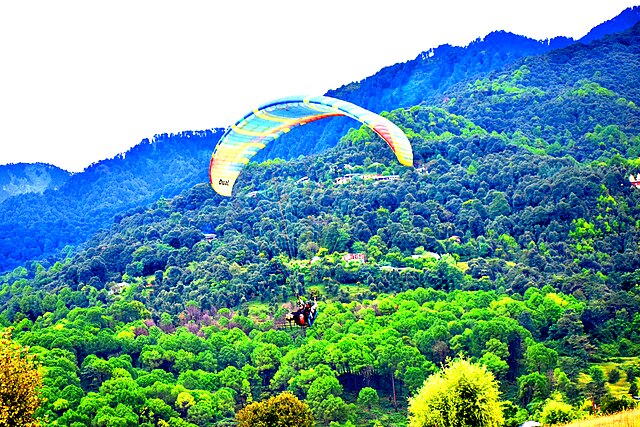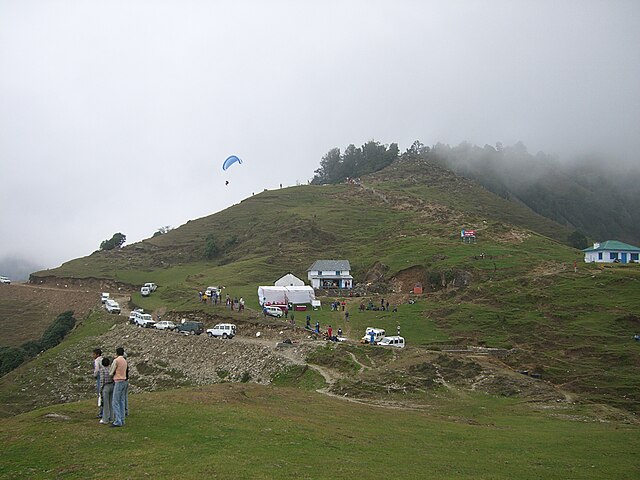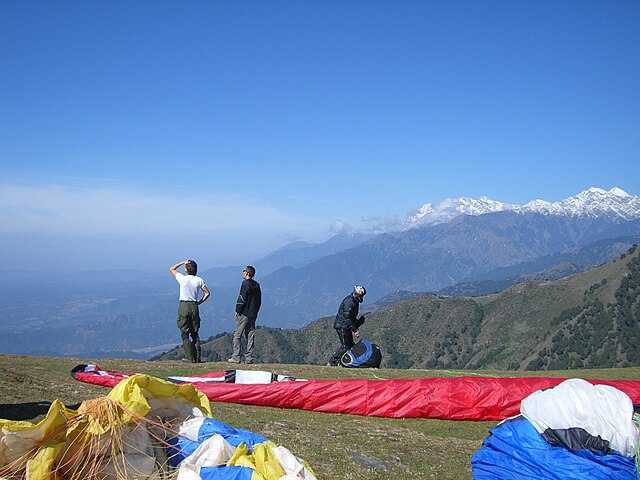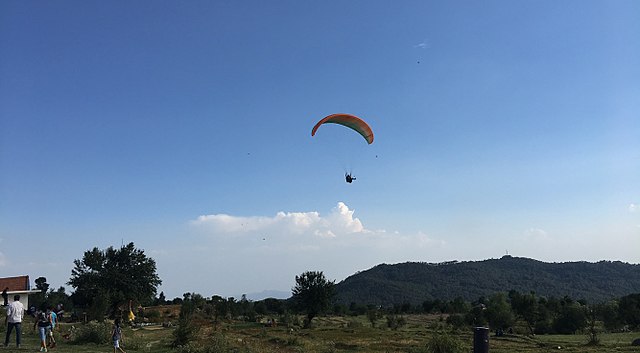Nestled in the picturesque Kangra Valley of Himachal Pradesh, Bir Billing has earned its reputation as the paragliding capital of India. But what truly sets this destination apart isn’t just its breathtaking landscapes or thrilling adventures – it’s the unique weather patterns that create perfect conditions for soaring through the skies. Understanding Bir Billing weather is crucial whether you’re planning your first tandem flight or you’re a seasoned pilot looking to conquer the thermals.
Have you ever wondered why pilots from around the world flock to this small Himalayan town? The answer lies in its exceptional meteorological conditions that seem almost tailor-made for paragliding and other adventure sports. Let’s dive deep into the fascinating world of Bir Billing weather and discover what makes this place so special.
What Makes Bir Billing Weather So Special?
The Unique Microclimate of Bir Billing
Bir Billing’s weather is like a perfectly orchestrated symphony, with each element playing its part to create ideal flying conditions. Situated at an altitude of approximately 2,400 meters above sea level, Billing serves as the take-off point, while Bir, at 1,400 meters, acts as the landing site. This altitude difference creates a unique microclimate that’s influenced by the surrounding Dhauladhar mountain range.
The geographical positioning of Bir Billing creates what meteorologists call a “thermal bowl” – a natural amphitheater where warm air rises from the valley floor, creating the lift that paragliders need to stay airborne. It’s like having nature’s own elevator system, constantly pushing warm air upward and creating the perfect conditions for extended flights.
The weather here is characterized by stable atmospheric conditions during the flying season, with predictable wind patterns that experienced pilots have come to rely on. The surrounding mountains act as natural windbreaks, protecting the area from harsh weather systems while allowing gentle, consistent breezes to flow through the valley.
Why Weather Matters for Adventure Sports
Think of weather as the invisible foundation upon which all adventure activities in Bir Billing are built. Just as a chef needs the right ingredients to create a masterpiece, adventure enthusiasts need the right weather conditions to ensure both safety and enjoyment.
For paragliding, weather isn’t just important – it’s everything. Wind speed, direction, thermal activity, visibility, and atmospheric stability all play crucial roles in determining whether it’s safe to fly. Too little wind, and there’s no lift; too much wind, and it becomes dangerous. The weather in Bir Billing strikes that perfect balance more consistently than most other locations worldwide.
Beyond paragliding, the weather affects trekking conditions, photography opportunities, and even the overall experience of simply being in this beautiful location. Understanding these patterns helps visitors plan their activities and make the most of their time in this Himalayan paradise.
Understanding Bir Billing’s Seasonal Weather Patterns

Spring Weather in Bir Billing (March to May)
Spring in Bir Billing is like watching the mountains wake up from their winter slumber. This season marks the beginning of the paragliding season, with weather conditions gradually improving as winter’s grip loosens.
Temperature and Rainfall Patterns
During spring, temperatures in Bir Billing range from a comfortable 10°C to 25°C, making it pleasant for outdoor activities. The mornings can still be quite chilly, especially in March, with temperatures often dropping to single digits. However, as the sun climbs higher, the day warms up beautifully, creating perfect conditions for thermal generation.
Rainfall during spring is generally minimal, though occasional spring showers can occur, particularly in April and May. These brief showers actually help clear the air, improving visibility for flying and creating those crystal-clear days that photographers dream about.
Wind Conditions for Paragliding
Spring winds in Bir Billing are typically gentle and predictable, making this season ideal for beginner pilots and tandem flights. The thermal activity starts building up gradually, usually beginning around late morning and continuing through the afternoon. Wind speeds generally range from 8-15 km/h, which is perfect for safe paragliding operations.
Summer Weather in Bir Billing (June to August)
Summer in Bir Billing brings its own unique character, though it’s quite different from the scorching summers experienced in the plains. The altitude provides natural air conditioning, keeping temperatures relatively moderate even during the hottest months.
Monsoon Impact and Safety Considerations
The monsoon season significantly impacts Bir Billing’s weather patterns, typically arriving in late June or early July. During this period, flying activities are generally suspended due to unpredictable weather conditions, including sudden thunderstorms, heavy rainfall, and unstable air masses.
However, don’t write off summer entirely. Pre-monsoon June often offers excellent flying conditions with strong thermals and clear skies. Many experienced pilots consider early June to be one of the best times for challenging cross-country flights, as the thermals are strong and reliable.
Autumn Weather in Bir Billing (September to November)
If Bir Billing weather had a golden period, autumn would undoubtedly claim that title. This season offers the most stable and predictable weather conditions of the entire year.
The Golden Season for Adventure Sports
Post-monsoon clarity brings visibility that can extend for hundreds of kilometers on clear days. The air is crisp, clean, and incredibly stable, creating ideal conditions for both beginner and advanced paragliding. Temperatures range from 15°C to 28°C during the day, dropping to a comfortable 5°C to 15°C at night.
Autumn weather in Bir Billing is characterized by consistent thermal activity, predictable wind patterns, and minimal precipitation. The monsoon has washed the air clean, and the approaching winter hasn’t yet brought the harsh conditions that can make flying challenging.
Winter Weather in Bir Billing (December to February)
Winter transforms Bir Billing into a completely different world. While the paragliding season officially winds down, the weather creates its own unique beauty and challenges.
Cold Weather Challenges and Opportunities
Winter temperatures can drop significantly, often reaching sub-zero levels during December and January nights. Daytime temperatures typically range from 5°C to 15°C, but the thin mountain air makes it feel much colder. Snow is common at higher altitudes, though Bir itself may only see occasional snowfall.
Despite the cold, winter weather in Bir Billing offers unique opportunities for those willing to brave the elements. The air is incredibly clear, providing stunning views of snow-capped peaks. Some hardy pilots do fly during winter, but it requires extensive cold-weather preparation and advanced skills.
Best Time to Visit Bir Billing Based on Weather

Peak Paragliding Season Weather
The absolute best weather for paragliding in Bir Billing occurs from October to November and again from March to May. During these periods, you’ll find the perfect combination of stable atmospheric conditions, comfortable temperatures, and predictable wind patterns.
October and November are particularly special because the post-monsoon air is incredibly clear, thermals are strong and reliable, and the weather is consistently stable. Many world-class competitions are held during this period precisely because the weather conditions are so dependable.
March through May offers gradually improving conditions as winter fades. Early season flying in March can be challenging due to cooler temperatures and weaker thermals, but by April and May, conditions become ideal for pilots of all skill levels.
Off-Season Advantages
Visiting during the off-season has its own rewards. While flying might be limited or impossible during monsoon months, the weather creates dramatic landscapes with lush green valleys and spectacular cloud formations. The cooler temperatures and occasional mist create a mystical atmosphere that many visitors find enchanting.
Winter visits, while requiring warm clothing, offer crystal-clear mountain views and a peaceful atmosphere that’s quite different from the bustling peak season energy.
Daily Weather Patterns in Bir Billing
Morning Weather Conditions
Mornings in Bir Billing typically start calm and cool, with minimal wind activity. The temperature inversion that occurs overnight creates stable air conditions, which is why commercial flying operations usually don’t begin until later in the morning.
During peak season, morning temperatures can range from 5°C to 15°C, gradually warming as the sun climbs higher. The lack of thermal activity in early morning makes it ideal for pre-flight preparations and equipment checks.
Afternoon Thermal Activity
As the sun heats the valley floor, thermal activity begins to develop, usually starting around 11 AM and reaching peak intensity between 2 PM and 4 PM. This is when Bir Billing weather truly shines for paragliding enthusiasts.
The thermals during this period can be quite strong, sometimes exceeding 4-5 meters per second of lift. Experienced pilots use these conditions for cross-country flights and altitude gains, while beginners benefit from the reliable lift for learning basic flying techniques.
Evening Weather Changes
As the sun begins to set, thermal activity gradually decreases, and weather conditions become more stable again. Evening flights can be magical, offering smooth air and spectacular views of the surrounding mountains bathed in golden light.
However, pilots need to be aware that weather conditions can change quickly in the mountains. What starts as a perfect evening flight can quickly become challenging if weather patterns shift unexpectedly.
Weather Forecasting for Bir Billing

Reliable Weather Sources
Getting accurate weather forecasts for Bir Billing requires using multiple sources and understanding their limitations. Local paragliding schools and operators often have the most reliable information, as they monitor conditions throughout the day and have years of experience reading local weather patterns.
Online weather services like Weather Underground, AccuWeather, and local Indian meteorological services provide general forecasts, but mountain weather can be highly localized and change rapidly. Many pilots also use specialized aviation weather services that provide more detailed atmospheric information.
Reading Local Weather Signs
Experienced locals and pilots have developed an almost intuitive understanding of Bir Billing weather patterns. Cloud formations, wind direction changes, and even the behavior of local birds can provide clues about incoming weather changes.
Learning to read these natural signs is part of the adventure of visiting Bir Billing. Local guides and instructors are excellent sources of this traditional weather wisdom, often predicting conditions hours before they show up on formal weather forecasts.
How Weather Affects Different Activities in Bir Billing
Paragliding Weather Requirements
Paragliding in Bir Billing requires specific weather conditions to ensure safety and enjoyment. Ideal conditions include wind speeds between 8-20 km/h, good visibility (at least 5 kilometers), stable atmospheric conditions, and no precipitation or thunderstorm activity.
Temperature also plays a role, as thermal activity depends on the sun heating the ground. Overcast days with limited sunshine result in weak thermals and shorter flights, while sunny days with some cumulus cloud development often provide the best flying conditions.
Trekking and Hiking Weather Conditions
The weather requirements for trekking around Bir Billing are somewhat more flexible than for paragliding. Light rain doesn’t necessarily prevent hiking, though it can make trails slippery and reduce visibility.
Clear weather obviously provides the best trekking conditions, offering spectacular views of the surrounding mountains and valleys. However, some of the most memorable trekking experiences can occur during changing weather conditions, when dramatic cloud formations and shifting light create unforgettable landscapes.
Photography Weather Considerations
For photographers, Bir Billing weather offers incredible opportunities throughout most of the year. The clear mountain air provides exceptional visibility, while changing weather conditions create dramatic lighting and cloud formations.
Golden hour photography is particularly spectacular, with the surrounding peaks catching the first and last light of the day. Monsoon weather, while limiting other activities, can create dramatic storm clouds and misty landscapes that are photographer’s dream.
Weather Safety Tips for Bir Billing Visitors

Preparing for Sudden Weather Changes
Mountain weather can change rapidly, and visitors to Bir Billing should always be prepared for sudden shifts in conditions. What starts as a clear, calm morning can quickly develop into windy, cloudy conditions by afternoon.
Always carry layers of clothing, as temperatures can vary significantly throughout the day and with changes in altitude. A waterproof jacket is essential, even during the dry season, as mountain weather can produce unexpected precipitation.
Essential Weather Gear
Regardless of the season, certain weather-related gear is essential for any visit to Bir Billing. A good quality windproof and waterproof jacket is crucial, as mountain winds can be fierce and weather can change quickly.
Sun protection is equally important due to the high altitude and clear mountain air. The UV radiation at Bir Billing’s elevation is significantly stronger than at sea level, making sunscreen, sunglasses, and a hat essential items for any outdoor activity.
Climate Change Impact on Bir Billing Weather
Like many mountain regions worldwide, Bir Billing is experiencing the effects of climate change on its weather patterns. Local operators and long-time residents report subtle but noticeable changes in seasonal patterns, with monsoons becoming less predictable and winter temperatures showing a gradual warming trend.
These changes don’t dramatically impact current flying conditions, but they do highlight the importance of real-time weather monitoring and the value of local knowledge in understanding evolving weather patterns.
The paragliding community in Bir Billing is increasingly aware of these environmental changes and works to promote sustainable tourism practices that help preserve the natural conditions that make this location so special.
Local Weather Wisdom and Traditional Forecasting
The local communities around Bir Billing have developed sophisticated understanding of weather patterns over generations. Traditional forecasting methods, based on observations of cloud formations, wind patterns, animal behavior, and seasonal indicators, often prove remarkably accurate.
Many local pilots and guides combine this traditional knowledge with modern meteorological forecasting to provide the most reliable weather predictions for flying conditions. This blend of ancient wisdom and modern technology creates a comprehensive understanding of Bir Billing weather that benefits all visitors.
Learning from local weather wisdom adds depth to any visit to Bir Billing, connecting visitors not just with the natural environment but also with the cultural heritage of the region.
Conclusion
Bir Billing weather is far more than just a backdrop to adventure – it’s the very essence that makes this destination world-renowned among paragliding enthusiasts and adventure seekers. From the reliable thermals of autumn to the dramatic monsoon transformations, each season brings its own character and opportunities to this Himalayan paradise.
Understanding these weather patterns isn’t just about planning the perfect trip; it’s about connecting with the natural rhythms that have shaped this region for centuries. Whether you’re soaring through crystal-clear skies during peak season or witnessing the raw power of monsoon storms, Bir Billing weather offers experiences that stay with you long after you’ve returned home.
The key to making the most of Bir Billing lies in respecting its weather patterns, preparing appropriately for changing conditions, and remaining flexible enough to embrace whatever atmospheric conditions nature provides. After all, some of the most memorable adventures happen when we learn to dance with the weather rather than fight against it.
Frequently Asked Questions
1. What is the best month for paragliding in Bir Billing based on weather conditions?
October and November are generally considered the best months for paragliding in Bir Billing. The post-monsoon weather provides crystal-clear air, strong and reliable thermals, stable atmospheric conditions, and comfortable temperatures. The weather during this period is highly predictable, making it ideal for both beginners and experienced pilots.
2. How does the monsoon weather affect activities in Bir Billing?
Monsoon weather (typically June to August) significantly impacts activities in Bir Billing. Paragliding operations are usually suspended due to unpredictable weather conditions, including thunderstorms, heavy rainfall, and unstable air masses. However, the monsoon transforms the landscape into a lush green paradise, offering unique trekking and photography opportunities for those who don’t mind occasional rain.
3. Can you fly during winter months in Bir Billing?
While possible, winter flying in Bir Billing (December to February) is challenging and suitable only for experienced pilots. The weather conditions include very cold temperatures, weaker thermals, and potential snow at higher altitudes. Most commercial paragliding operations close during winter months due to harsh weather conditions and safety considerations.
4. How accurate are weather forecasts for Bir Billing?
Weather forecasts for Bir Billing can be moderately accurate for general trends, but mountain weather is inherently unpredictable and can change rapidly. Local paragliding operators and experienced pilots often provide the most reliable weather information, as they monitor conditions continuously and understand local weather patterns. It’s always recommended to check multiple sources and rely on local expertise.
5. What should I pack for changing weather conditions in Bir Billing?
For Bir Billing’s variable mountain weather, pack layers including warm clothing, a waterproof windproof jacket, comfortable hiking boots, sun protection (sunscreen, sunglasses, hat), and both warm and light clothing options. Weather can change quickly from sunny to cold and windy, so being prepared for various conditions is essential regardless of the season you visit.

